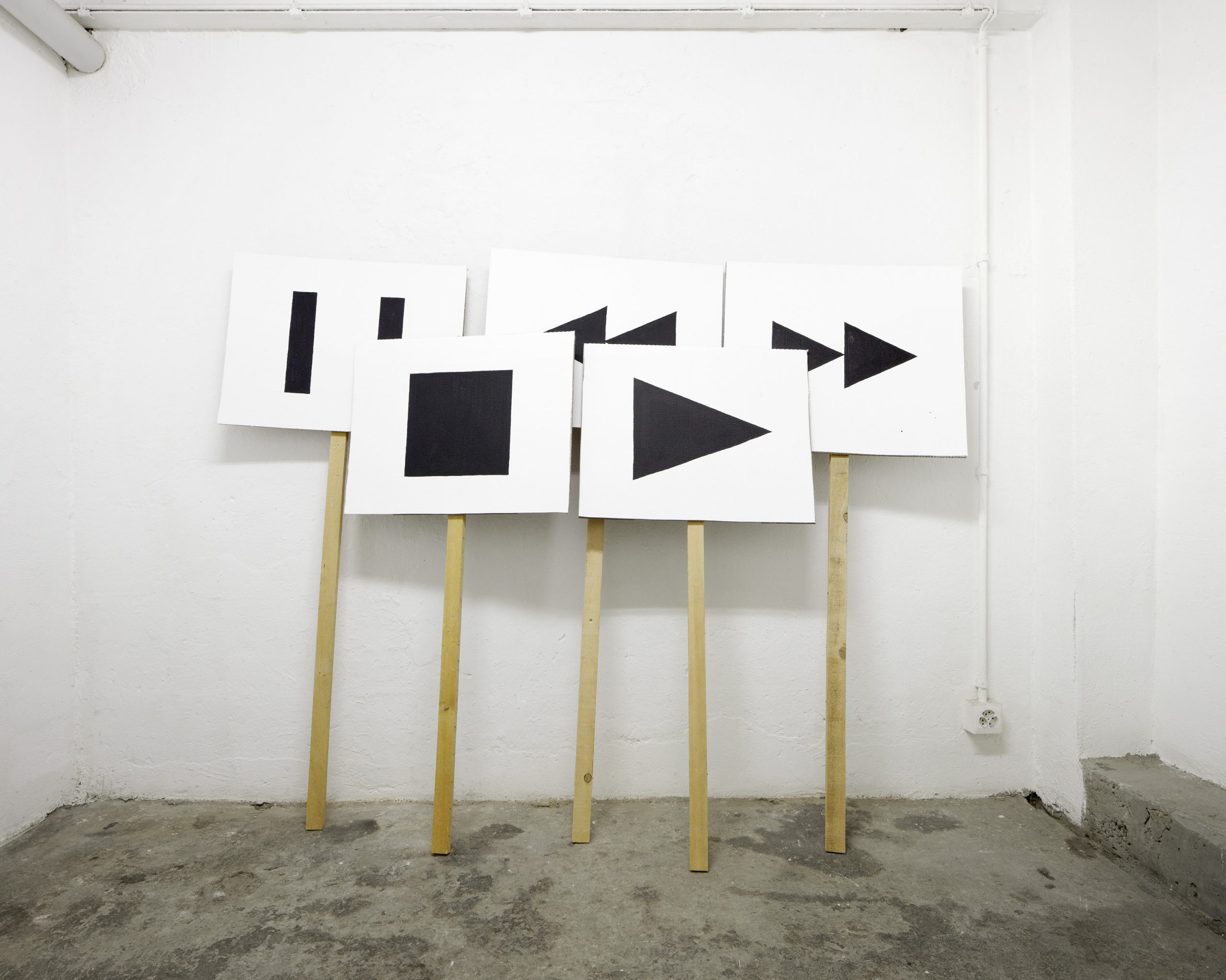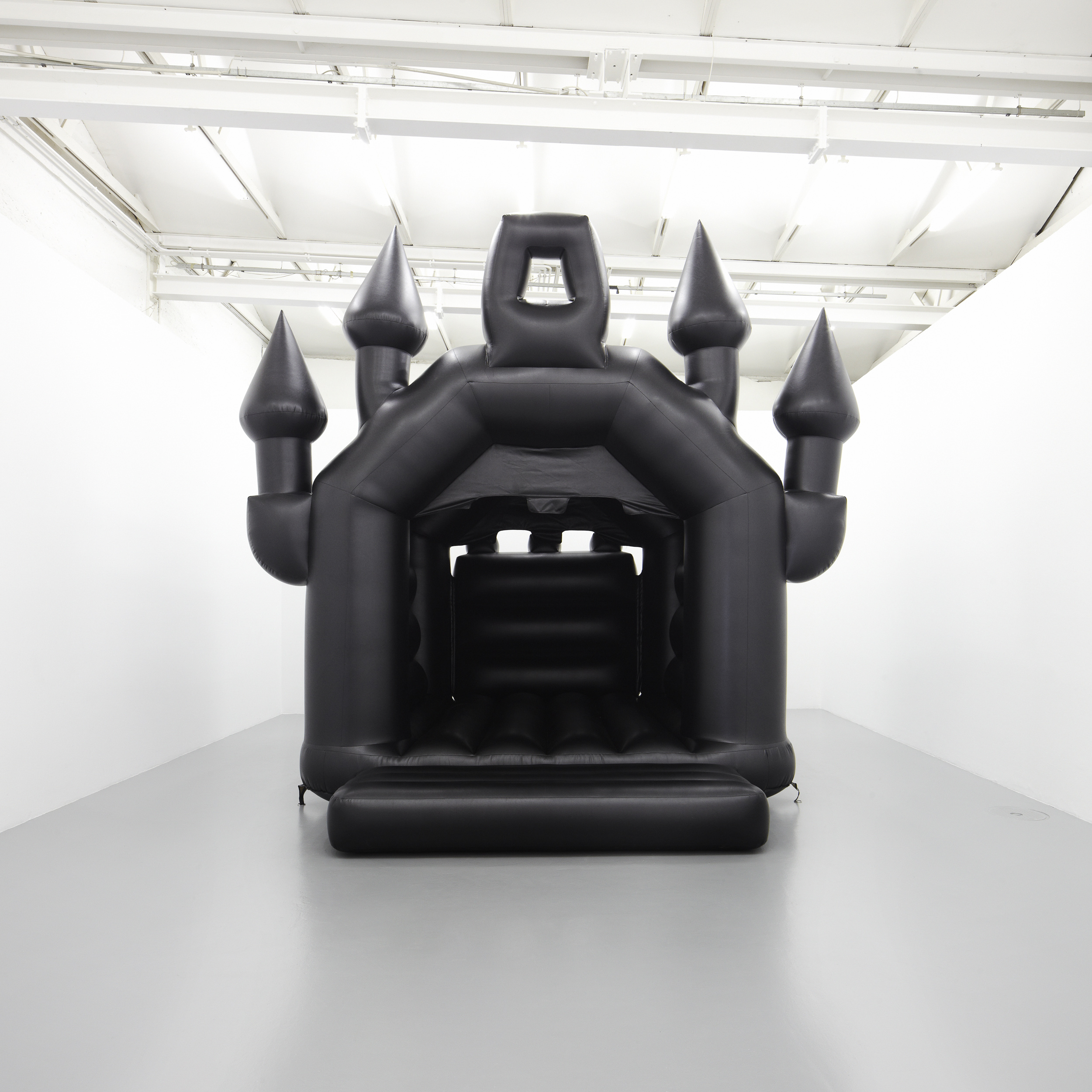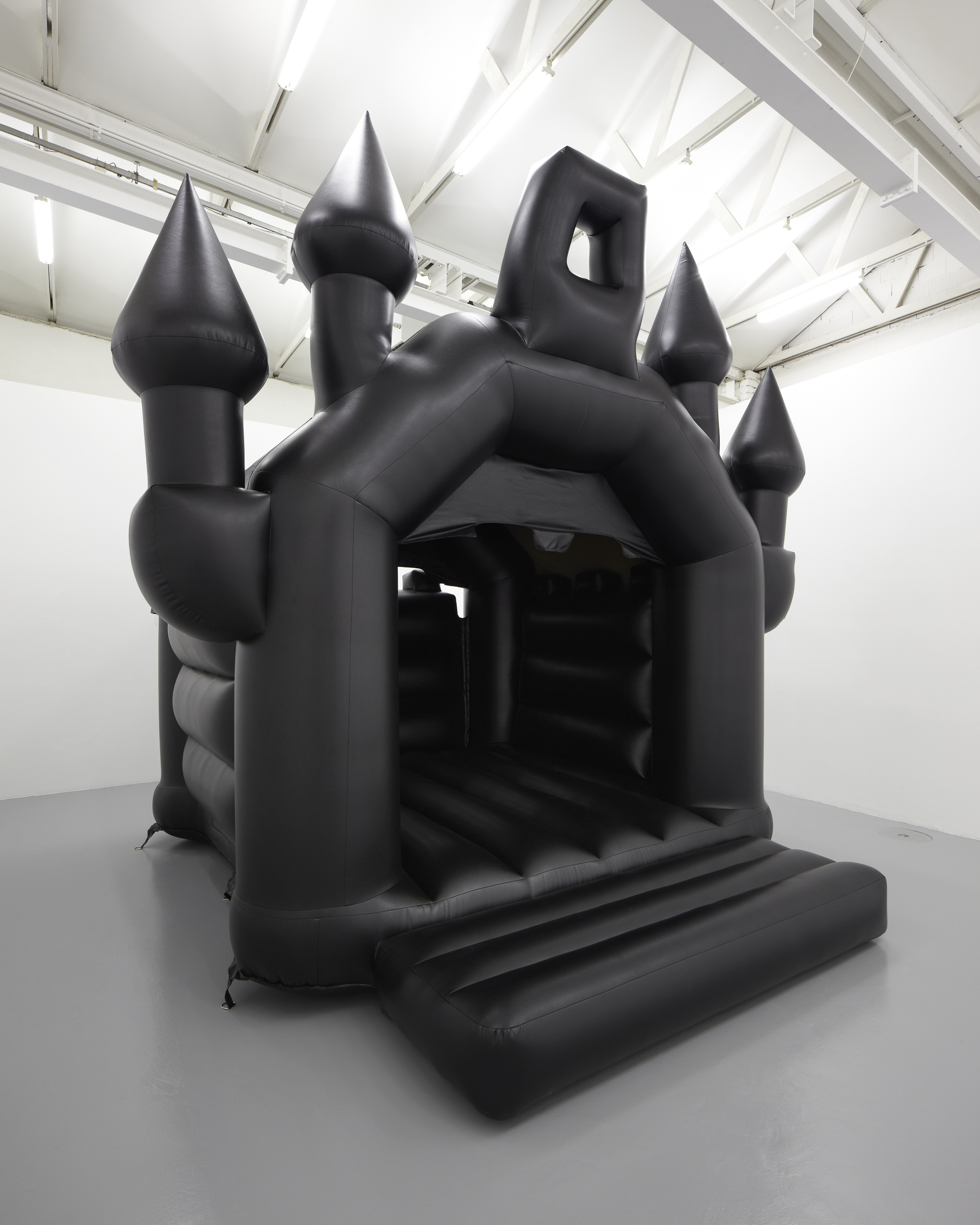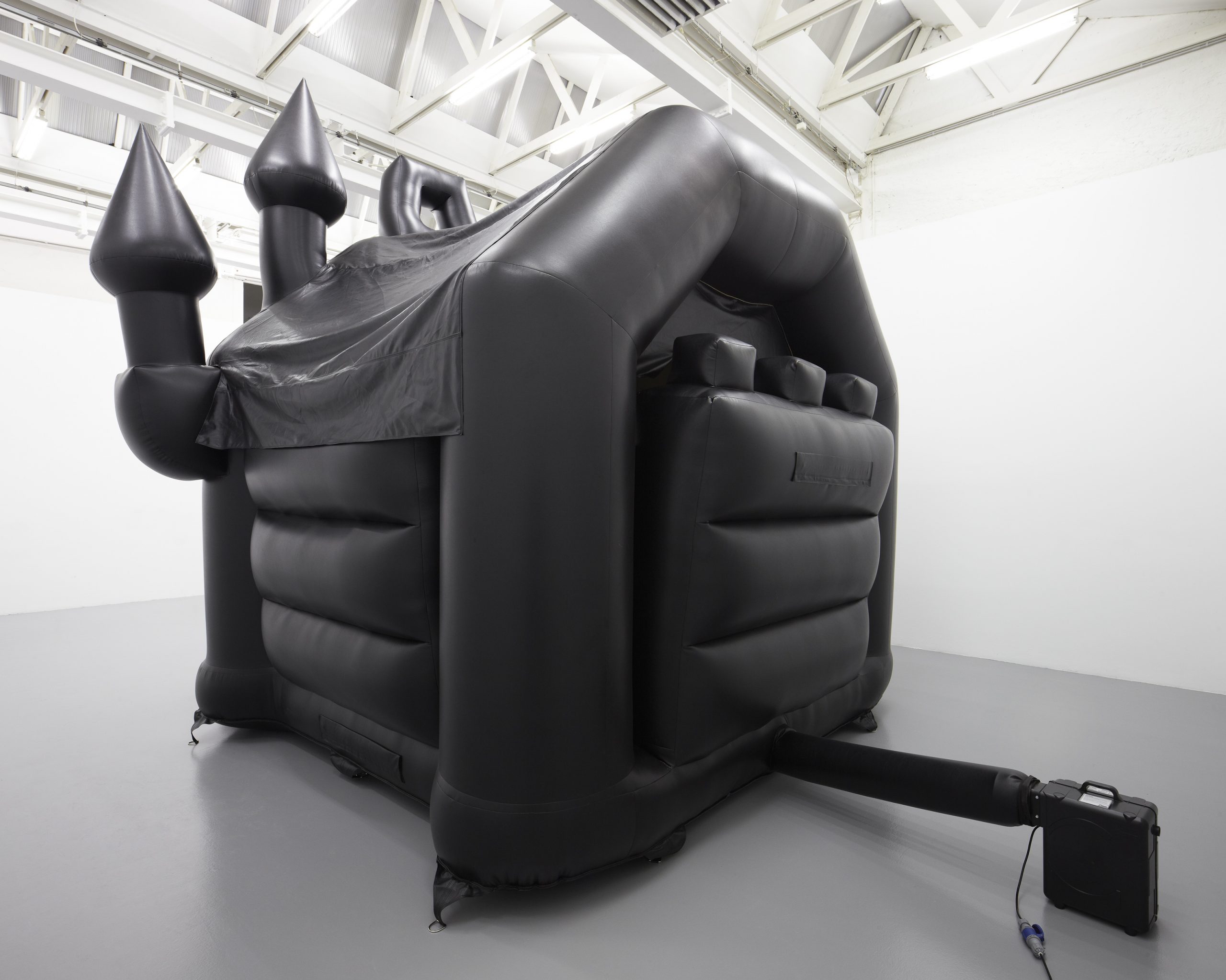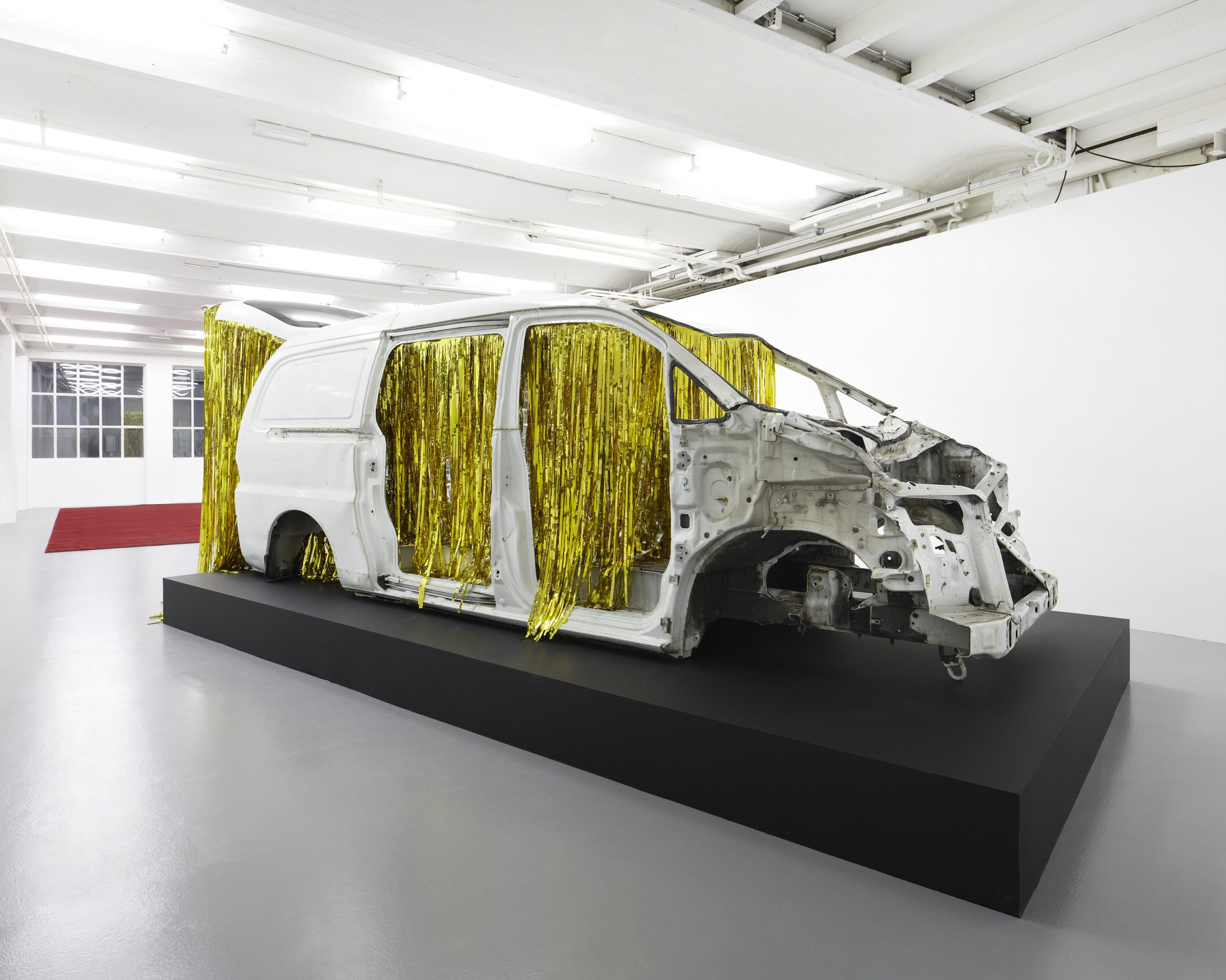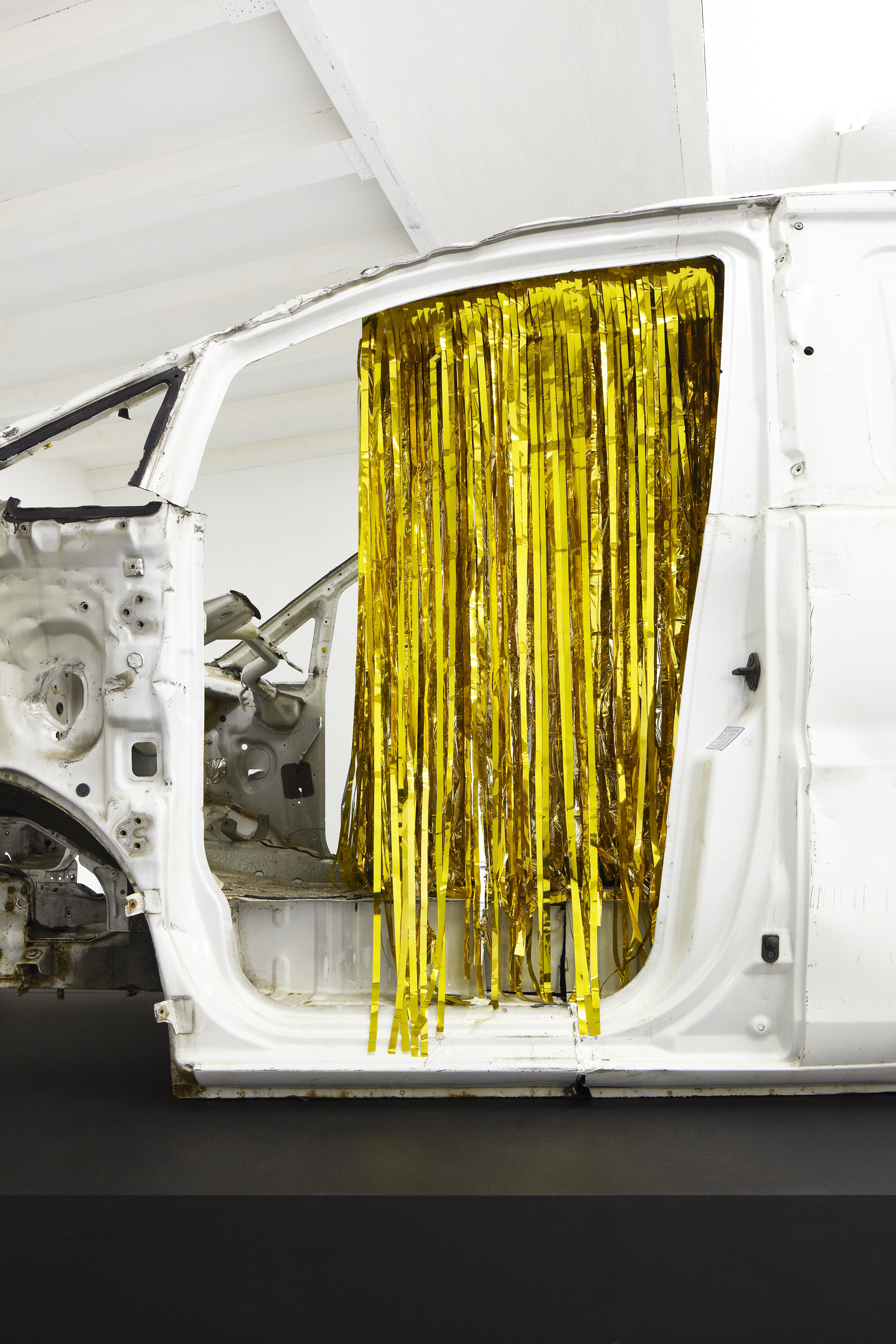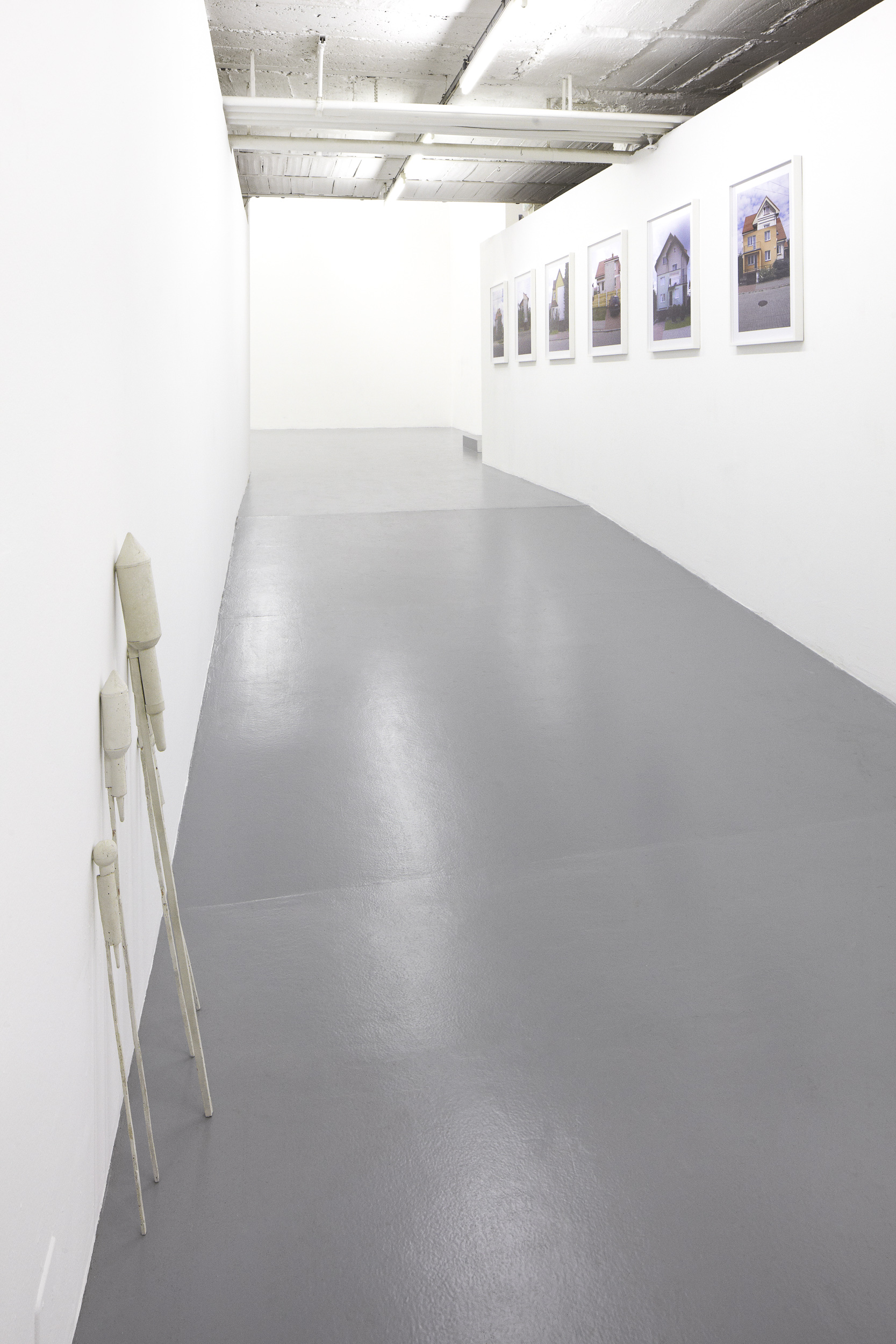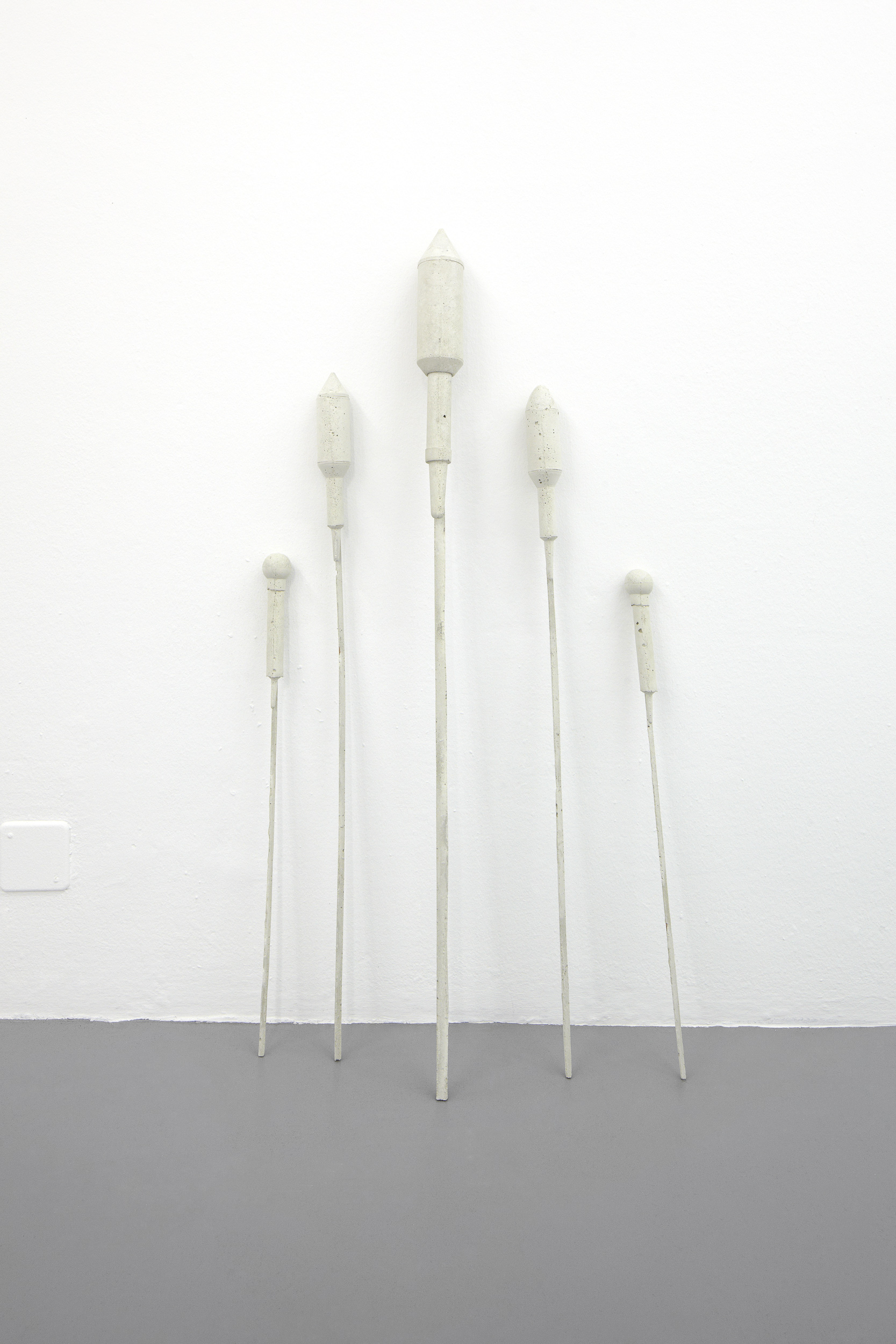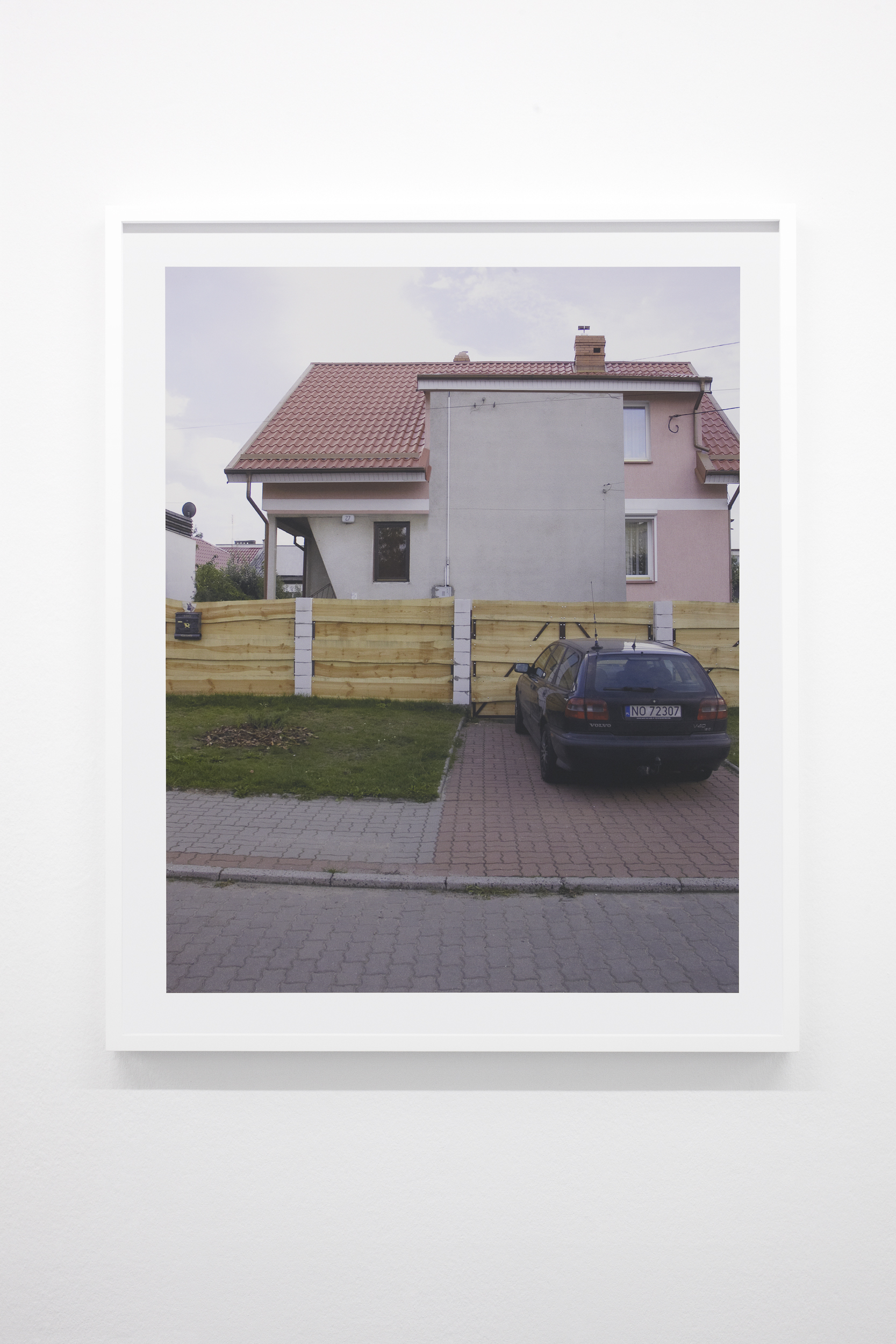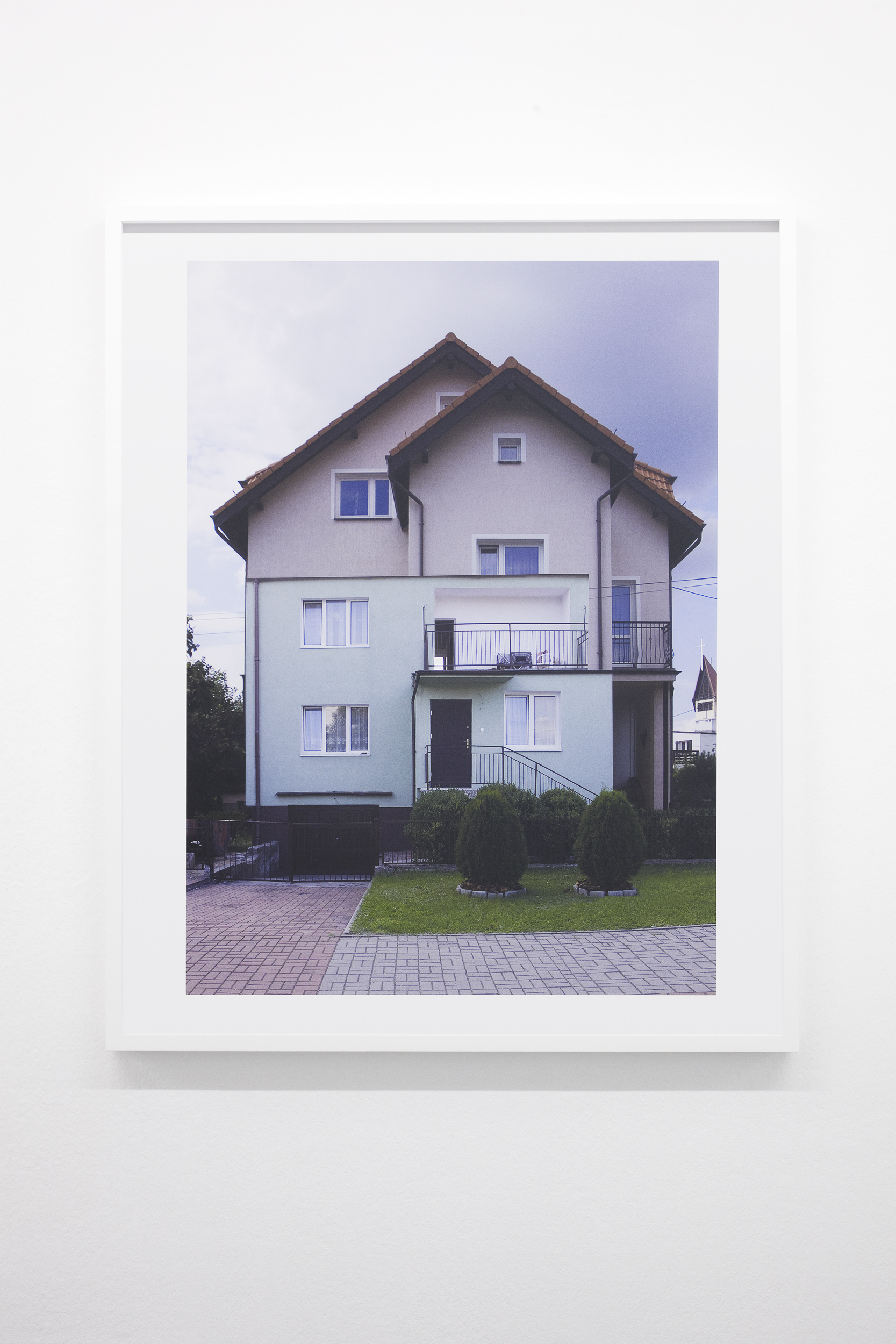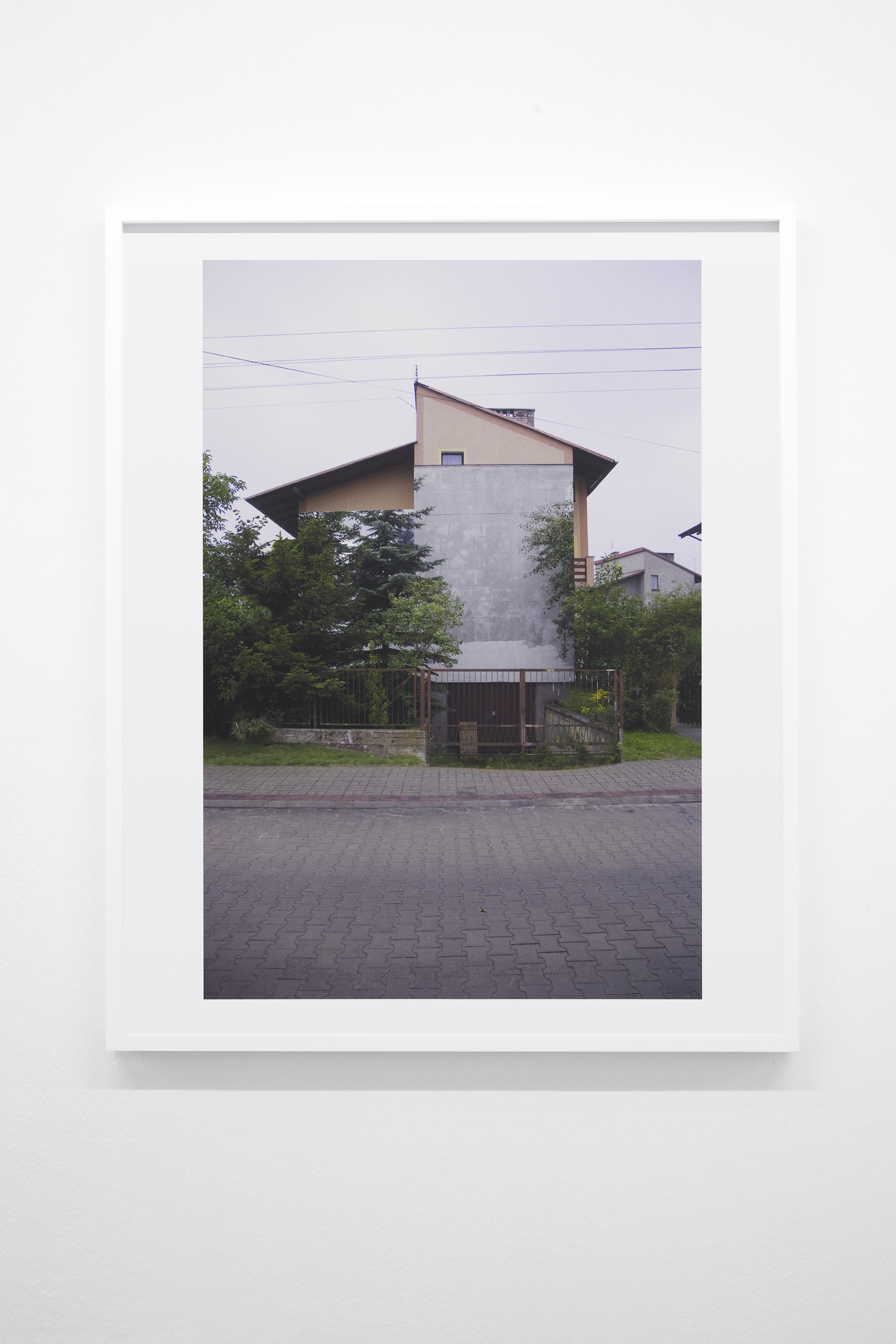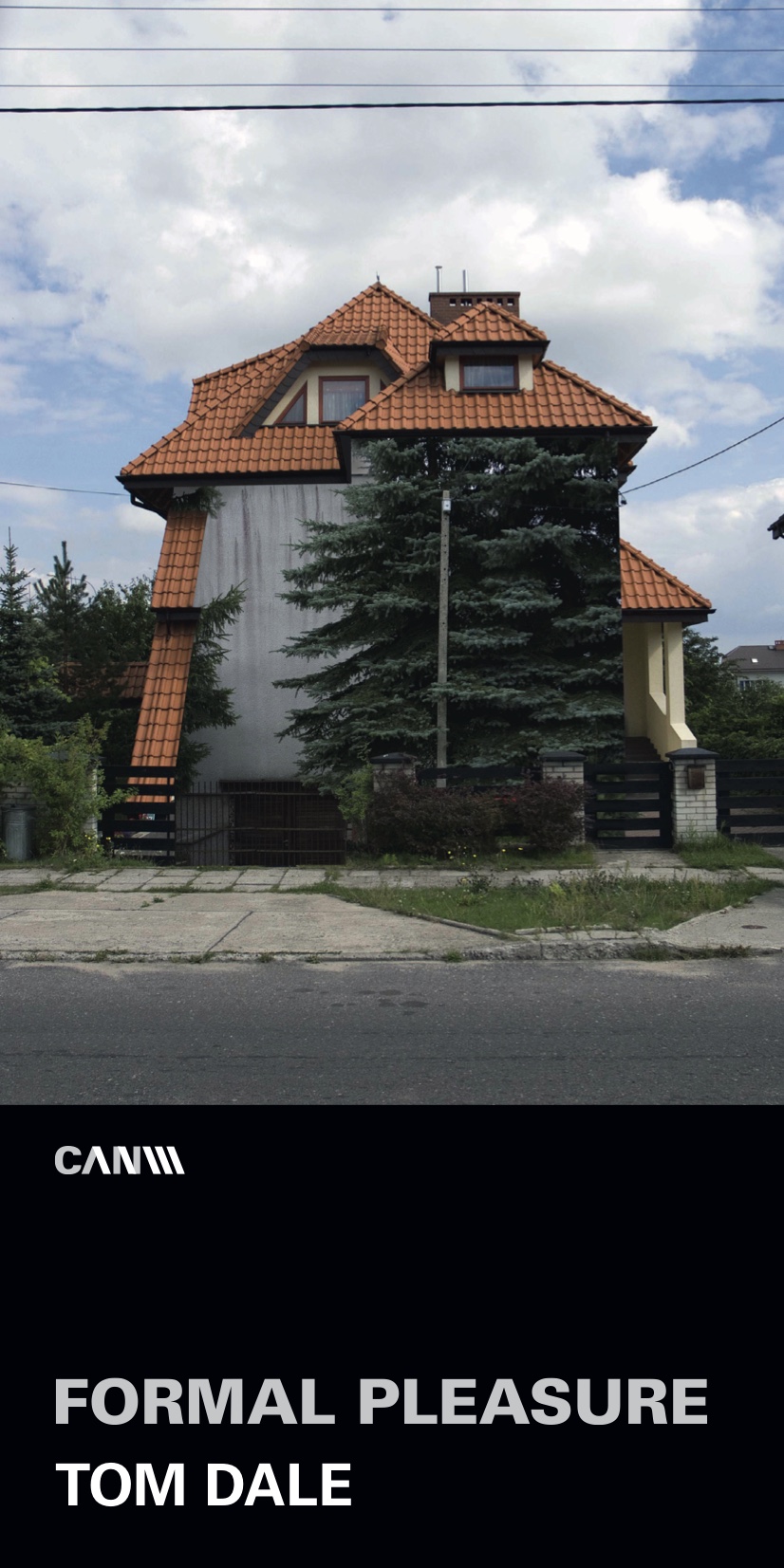Artist Artist
Project Project
Formal Pleasure
On fi rst reading the title of Tom Dale’s exhibition, Formal Pleasure appears to suggest the simple pleasure that a viewer can take in the formal qualities of an object, image or even art itself. With repetition the meaning seems to shift, perhaps suggesting the pleasure that one who is viewed might take in compliance or conformity. But again with repetition this doesn’t sit squarely either. What is clear is that from an apparently straightforward term Dale has already managed to blur the division between personal and public space.
Of the six new works produced for this exhibition, public and private space immediately collide when we consider the exhibitions central work, Department of the Interior a large 5x4x4m black leather in atable castle. An object more often associated with creating a space of inclusivity and participation has by virtue of a change in material become something wrought with con icting notions of power and expression. It seems to propose pleasure in both a sense of release and restrain, without disclosing the powers at play.
Invariably there are two stages to the way in which Dale’s art is received, fi rstly in an almost visceral way and later cognitively. The set-up and delivery of his photographs, objects and films, share a dexterity and structural similarity with the way in which a joke is able to turn an idea upon its heels. But it is the scale and cultural loading of the ideas at work that make their impact, rather than a punch line, the subject of Dales attention.
Impact is manifest quite literally in the lush pile of a large red carpet, made by sitting a 3-ton missile launcher on it the carpet exhibits a con guration of circles not unlike those found in images of crop circles or the geometry of early constructivist drawings. As a series of marks these circles are haunted not just by the object that made them, but also by the consequential impact of its activation.
If a sense of distance between cause and effect is con ated in the pile of the red carpet then a series of reworks cast in concrete suggests an altogether different relationship to notions of the beyond. The redundant trajectory of the earth bound concrete reworks speaks too of a shift in the perceived relationship between the firmament and terra firma. The terms and conditions of what we now find at ground level, this place we depart from and return to, and how we go about negotiating them underlies each of the works in this exhibition, but more importantly they ask, “What should be done?”
Opening February 10 2012
Exhibition from February 11 to April 1 2012
CAN team
Arthur de Pury, Marie Villemin, Massimiliano Baldassarri, Marie Léa Zwahlen, Julian Thompson
